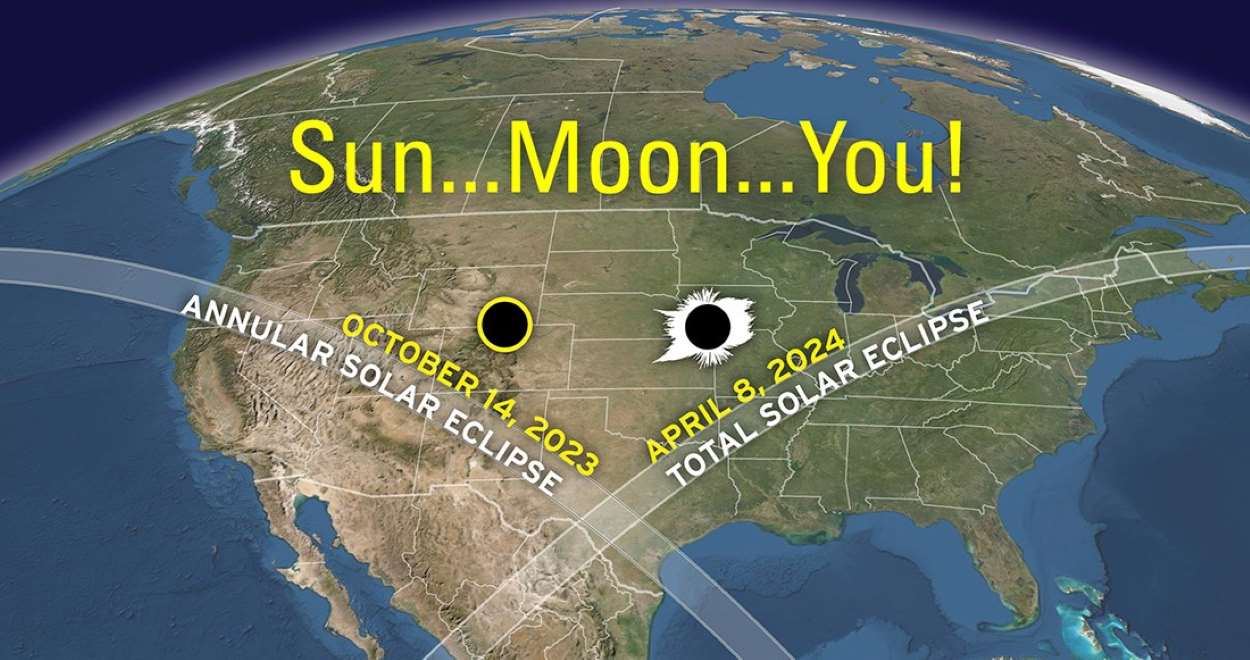Where and When You Can Witness Nature’s Most Majestic Show
On Monday, a rare celestial event will cast a shadow across North America, promising viewers an awe-inspiring experience that is not just cosmic but truly earth-shaking. A total solar eclipse, where the moon entirely obscures the sun, will be visible as a dark band sweeping across parts of the United States, Canada, and the Arctic. It’s a moment of surreal beauty, and if you’re fortunate enough to be within the path of totality, it’s an opportunity you won’t want to miss—after all, the next total solar eclipse over North America isn’t expected until 2024.
The Path of Totality
Your Last-Minute Guide to Monday’s the path of totality, the narrow strip of land where the shadow of the moon will fully block out the sun, stretches from extreme northwestern Canada to the Northeast and Atlantic, including parts of Nunavut, Greenland, and Newfoundland and Labrador. If you’re not in the direct path, don’t worry, you can still observe a partial eclipse.
The Timing and Duration
The eclipse will begin around 6 a.m. EDT near the Great Lakes and will cross increasingly populated areas for its four-hour duration. In cities like Montreal, Boston, and New York, the partial eclipse will start early, continuing until just after 3 p.m. EDT. The exact moment of totality will vary depending on your location along the path but will occur between 2 p.m. and 3 p.m. local time.
Safety First: Protecting Your Eyes During the Eclipse
The natural caution that many have about everyday sunshine goes double for solar viewing and quintruple when it comes to an eclipse. For such events, proper eye protection is non-negotiable. Fortunately, simple tools and techniques will allow you to witness the eclipse safely.
How to Safely Watch
Never look directly at the sun without proper eye protection. During the partial phases of the eclipse, tools like solar viewing glasses with CE or ISO certification, telescopes with a proper solar filter, or even a simple pinhole camera can allow you to watch the eclipse without risk. For those in the path of totality, the most enthralling moments between second and minutes when the sun’s corona is visible will require the same precautions.
Safe Equipment Is a Must
Using only certified equipment, like eclipse glasses, will help protect your eyes from the sun’s harmful rays. Make sure your glasses are not scratched, pierced, or over three years old, as this could degrade their effectiveness. Similarly, if using a telescope or camera to take photos, ensure they have an approved solar filter.
The Experience: What to Expect During the Eclipse
The total solar eclipse is about more than just darkening skies and the sun’s corona. It brings with it a range of natural phenomena that occur only in the path of totality.
The Anatomy of an Eclipse
The movement from partial to total eclipse creates a sequence of changes in the environment. From the temperature drop known as the “eclipse cool” to the sudden onset of light conditions akin to twilight, the eclipse is a multi-sensory event. It’s also an opportunity to observe the planets and stars that, under normal daytime brightness, would be invisible.
The Emotional Impact
For many eclipse viewers, the most powerful element is the sense of connection to the cosmos and the fleeting yet profound understanding of the solar system’s mechanics. The eclipse has a way of redefining the sky—seen one, nothing will look quite the same again.
Capturing the Moment: Photography and Eclipse-Chasing Tips
If you want to commemorate the eclipse with a stunning photograph, careful planning and the right gear are essential. Whether professional or amateur, these tips will help you capture the event.
Preparing Your Equipment
If you’re planning on taking photos, arrive at your location early to set up, since the changing conditions and the speed of the moon’s shadow can make the critical moments fly by. Use a sturdy tripod and a remote shutter release to avoid camera shake. Experts recommend bracketing your shots with different exposures, so you’re sure to catch the corona’s delicate tendrils without overexposing the inner portions of the sun.
The Perfect Location
Choose a site with a clear view of the horizon and the sun’s path across the sky. Incorporating the local landscape or people watching the eclipse can add context and story to your images. Most importantly, make sure to test your equipment beforehand to avoid missing the perfect shot due to technical issues.
Post-Eclipse Gathering and Sharing Your Experience
The eclipse isn’t only about the natural world—it’s also a social gathering, an event to be shared and celebrated. Afterward, make sure to connect with fellow eclipse-chasers to swap photos and stories.
Join the Online Community
Platforms like Instagram, Twitter, and Facebook will be flooded with eclipse content, from professional-grade photos to candid snapshots. Use hashtags to connect with others, build relationships, and be part of the larger eclipse community.
Learn and Grow
Eclipses are as much about learning as they are about viewing. You don’t have to be a scientist to appreciate the astronomical principles at work, and engaging in discussions can deepen your understanding and appreciation of the event.
Final Thoughts on the Total Solar Eclipse
A total solar eclipse is a unique and rare phenomenon, a convergence of the paths of Earth, the moon, and the sun that’s both scientifically significant and emotionally impactful. If you have the chance to experience it, don’t pass it up—safeguard your sight, gear up your camera, and prepare to be amazed.
Make your plans now, and remember, the universe is full of wonder, waiting for us to look up and notice. The August 2023 eclipse won’t be as grand, the 2024 one won’t come this way, and who knows where any of us will be by 2045 when the next one meets a similar path. For all of us, Monday’s eclipse will be a singular and spectacular happening in the cosmos of our lives, demanding our attention and deserving our awe.




